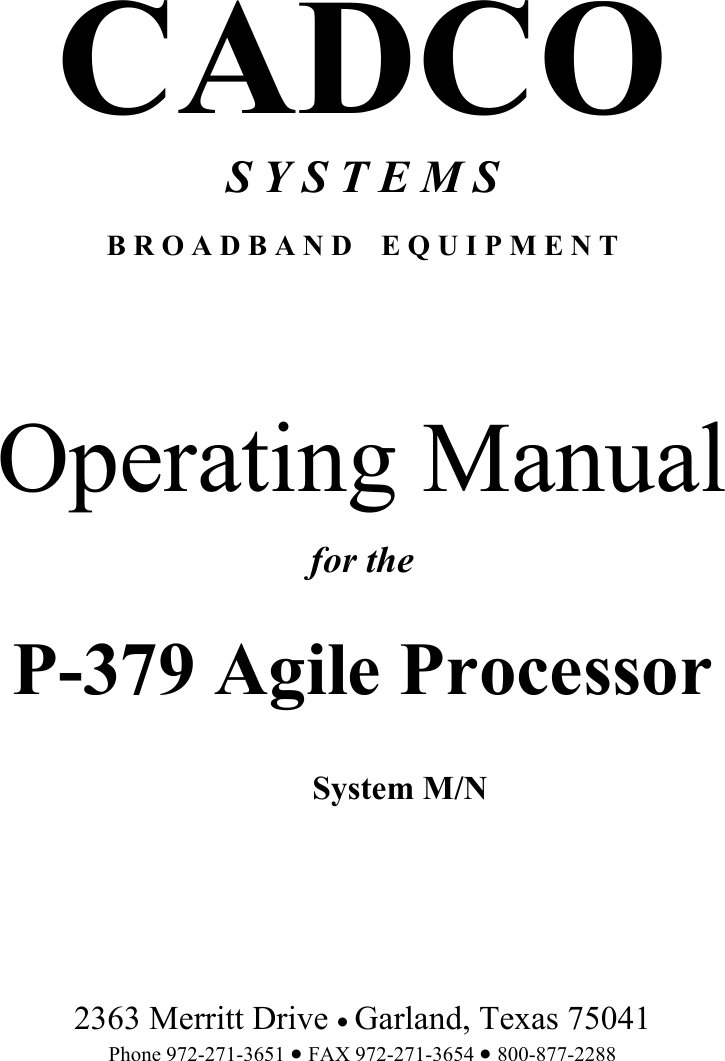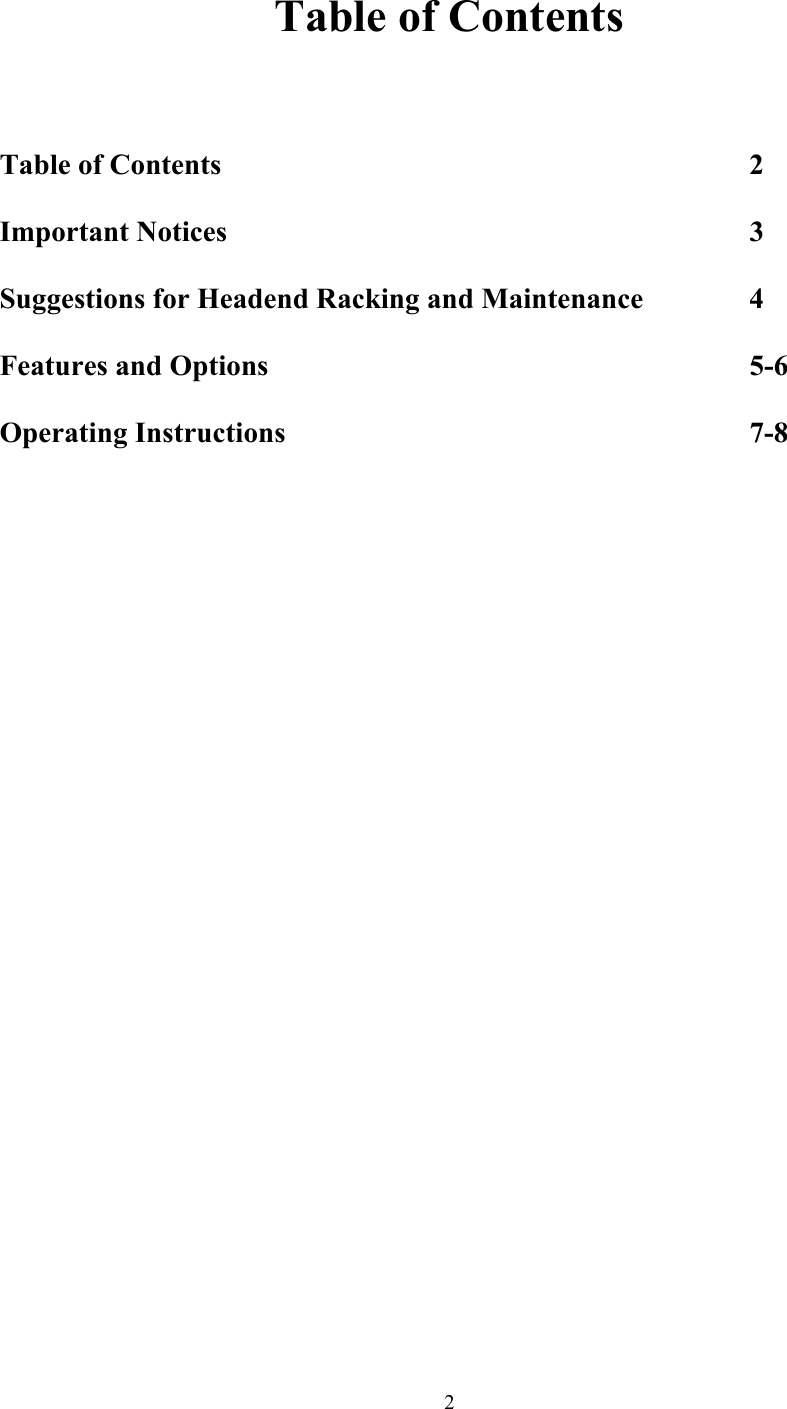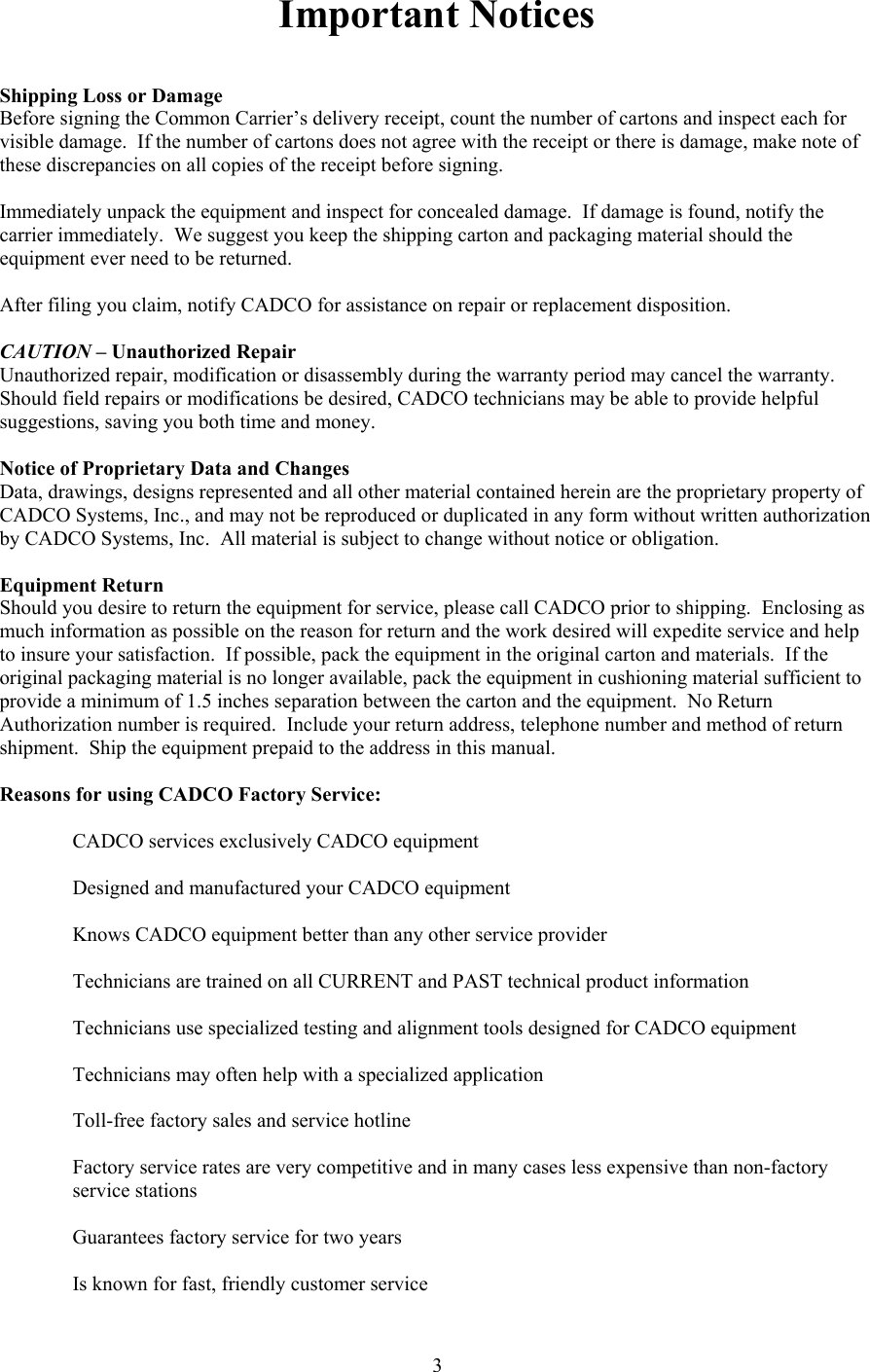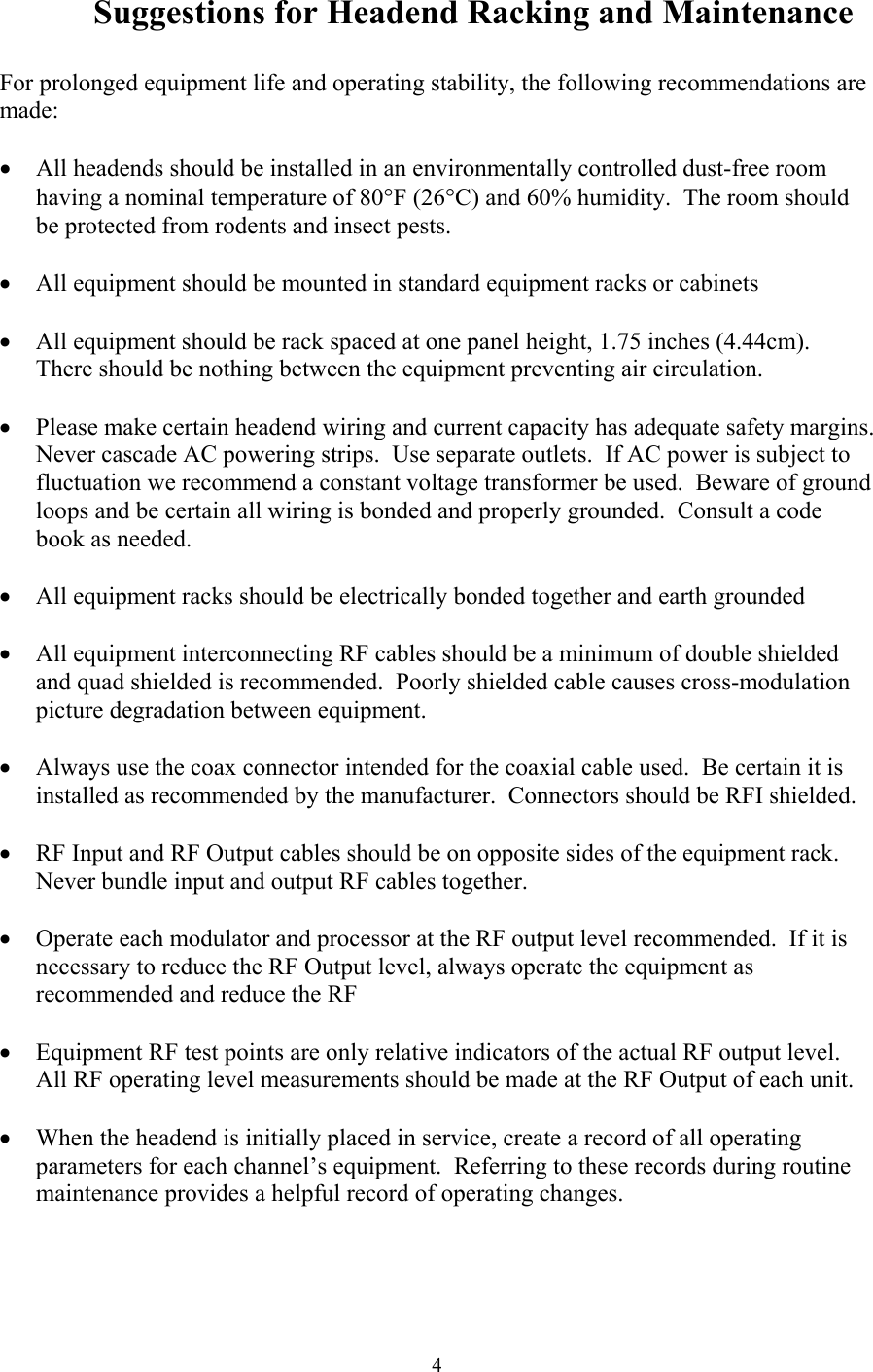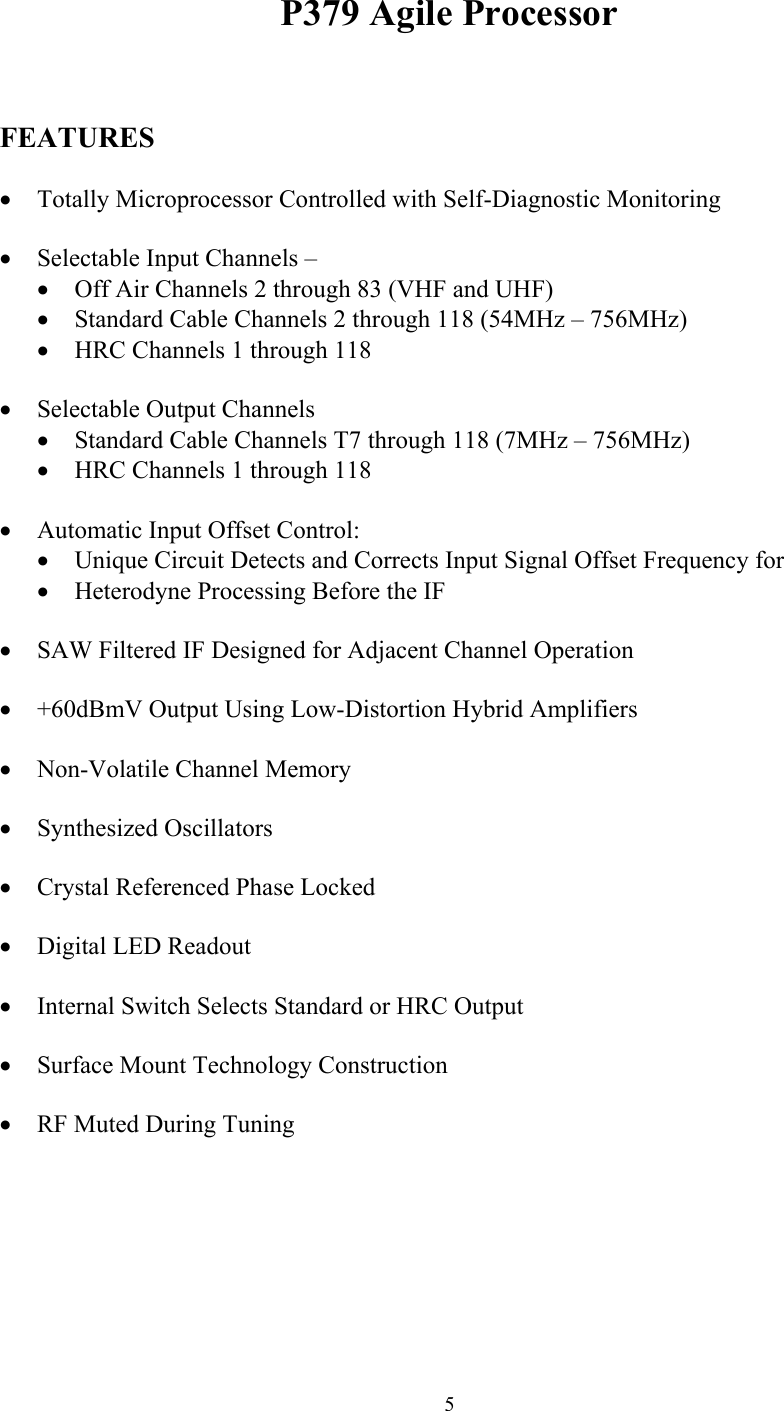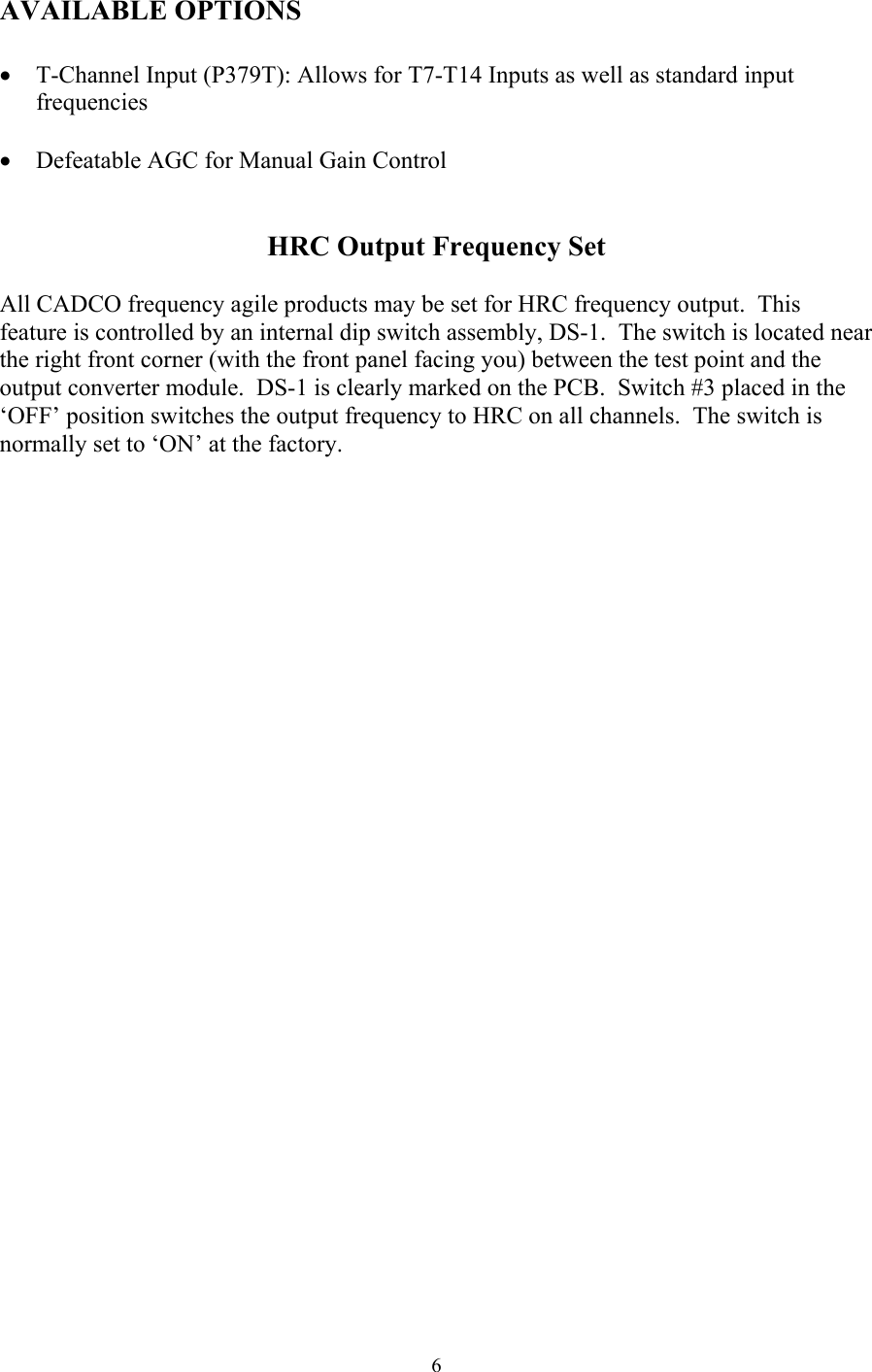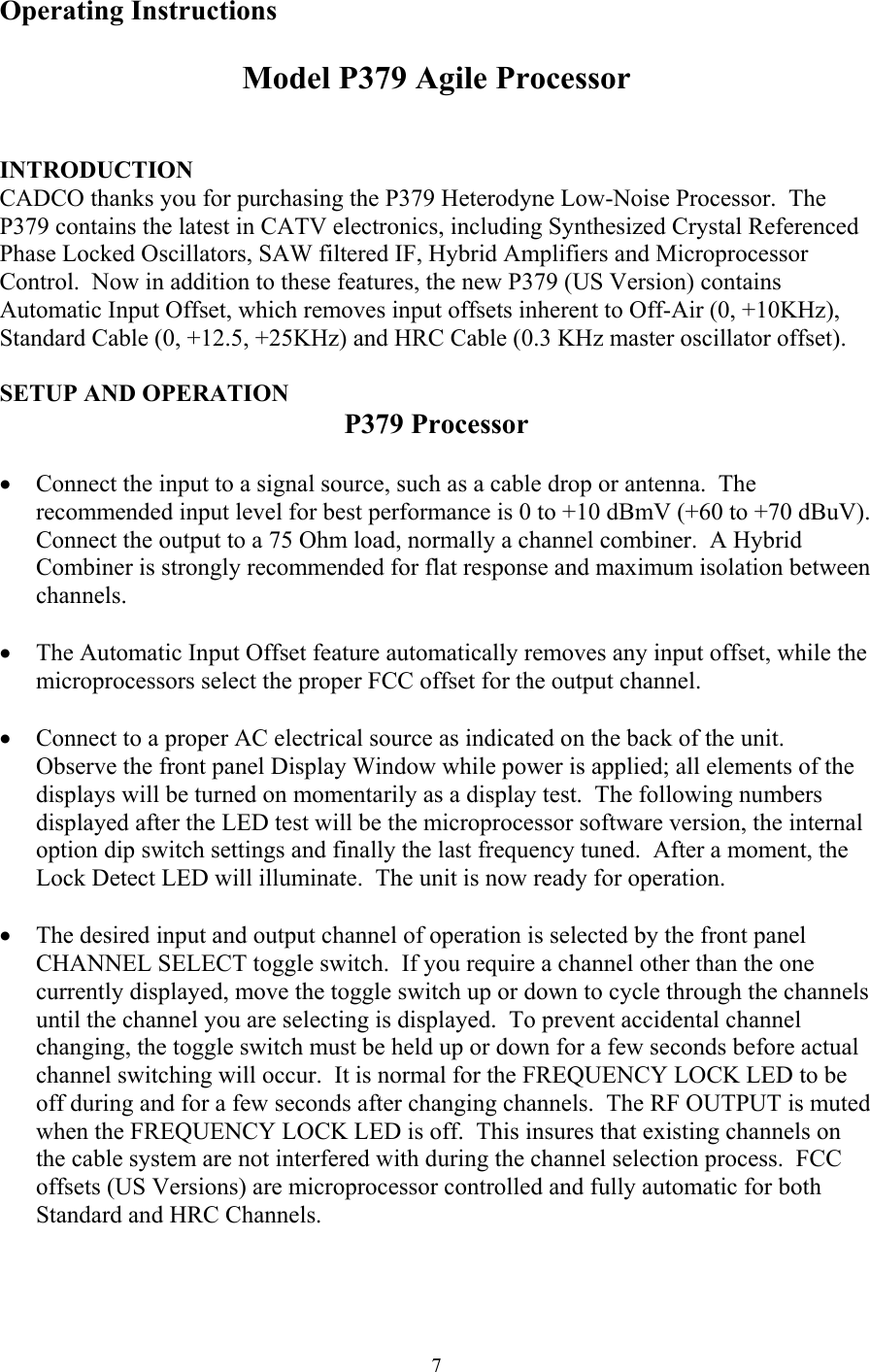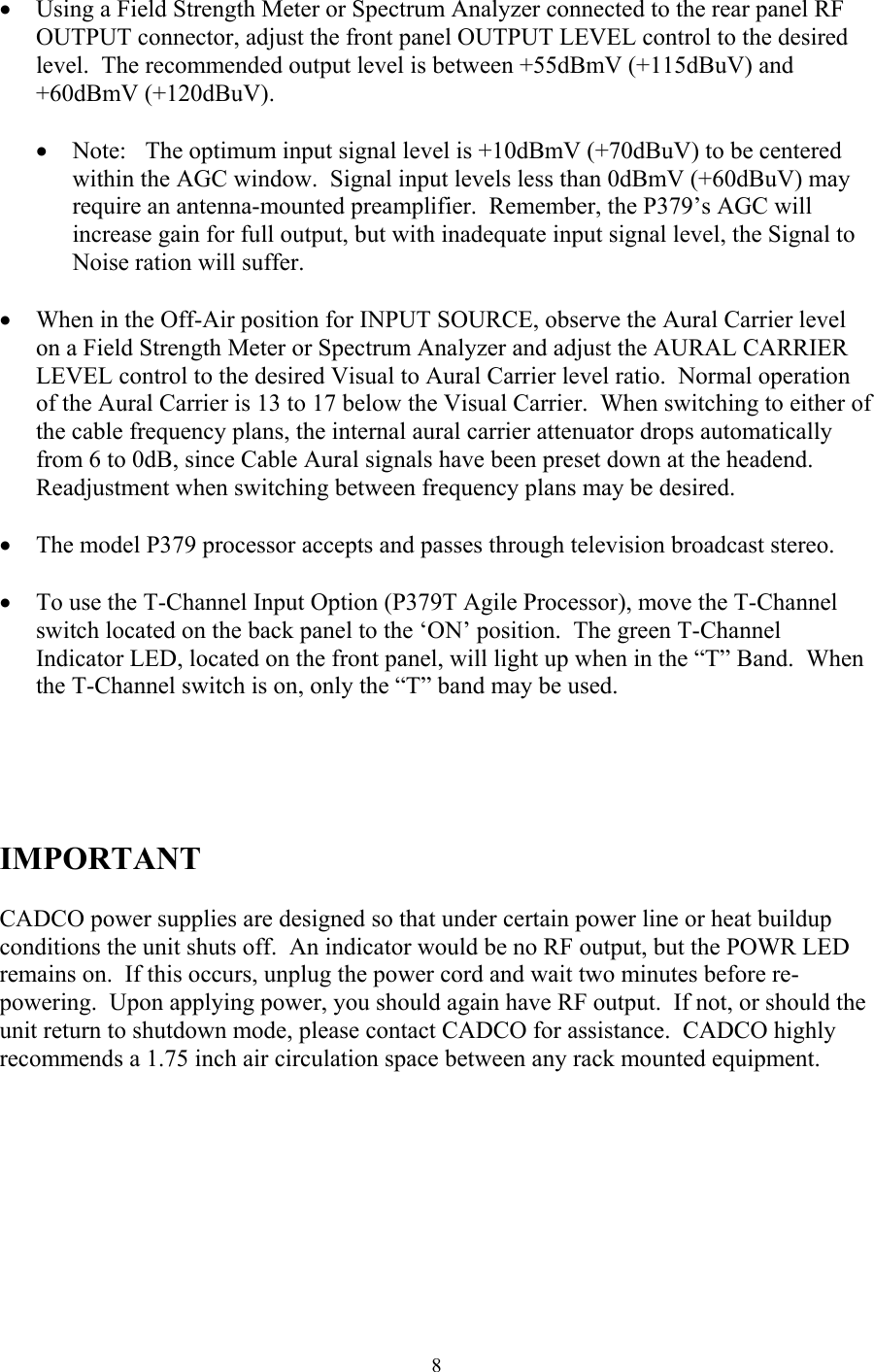Medex XL20-10MED XL 20 AND XL10 DIGITAL TRANSMITTER RETROFIT KIT User Manual Are You suprised
Medex, LLC XL 20 AND XL10 DIGITAL TRANSMITTER RETROFIT KIT Are You suprised
Medex >
Contents
- 1. User Manual File 1 of 3
- 2. User Manual File 2 of 3
- 3. User Manual File 3 of 3
User Manual File 2 of 3
